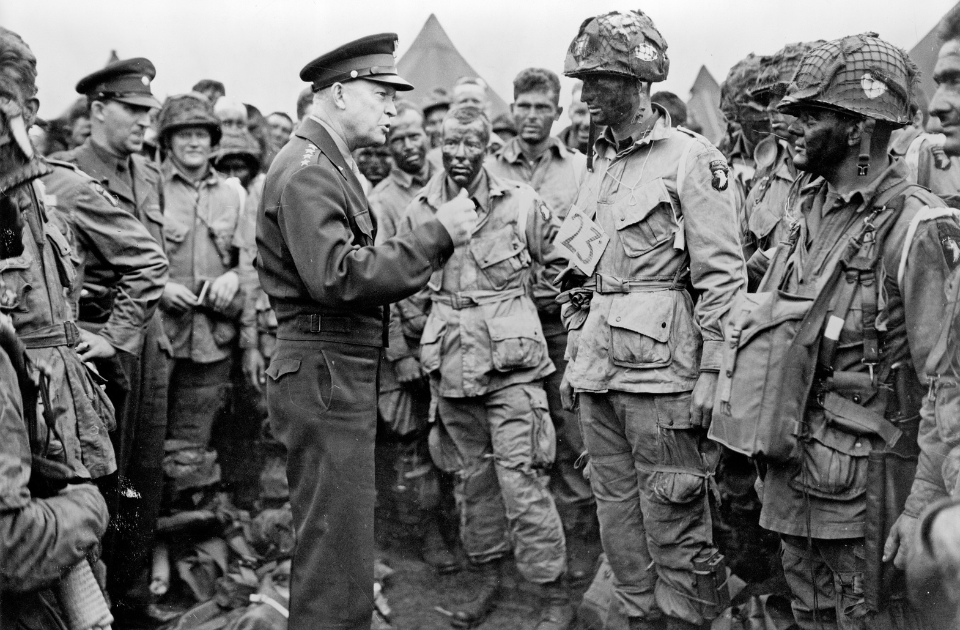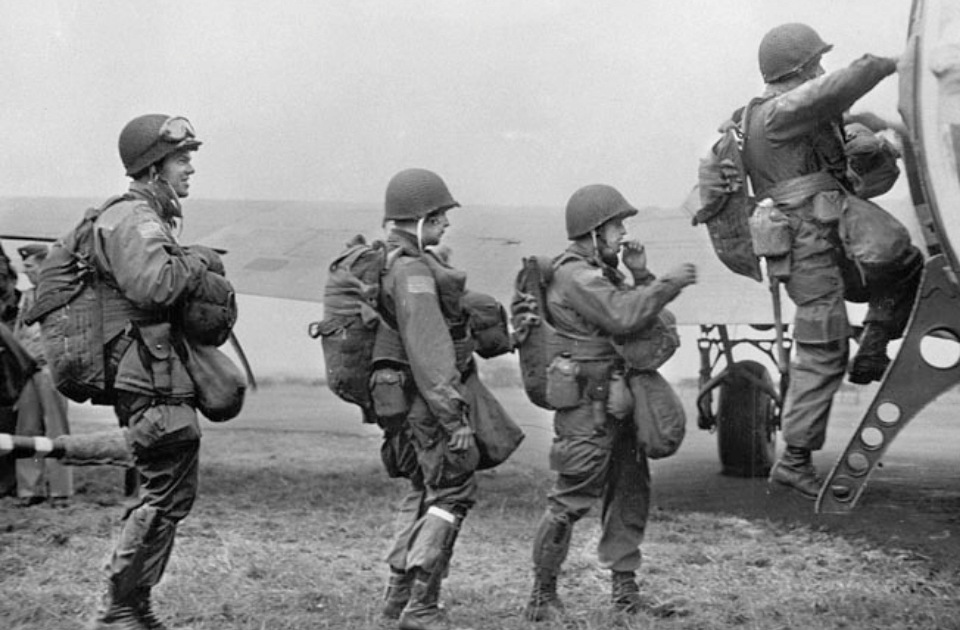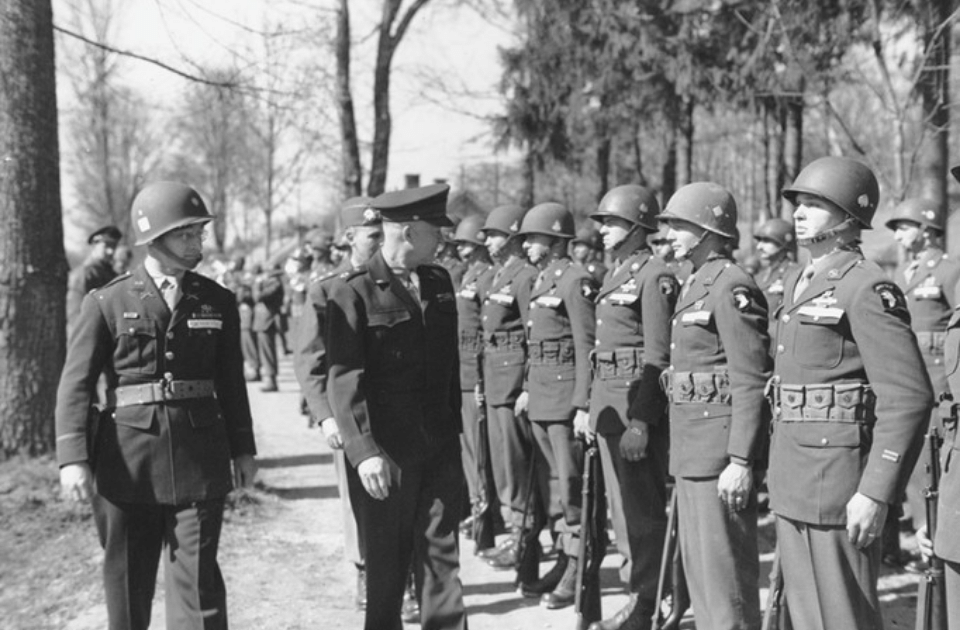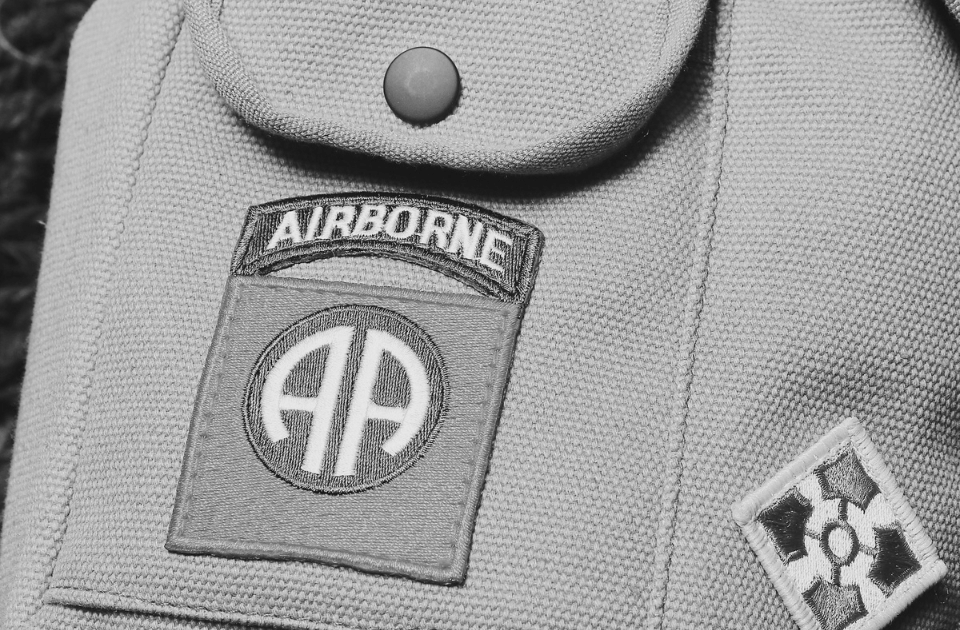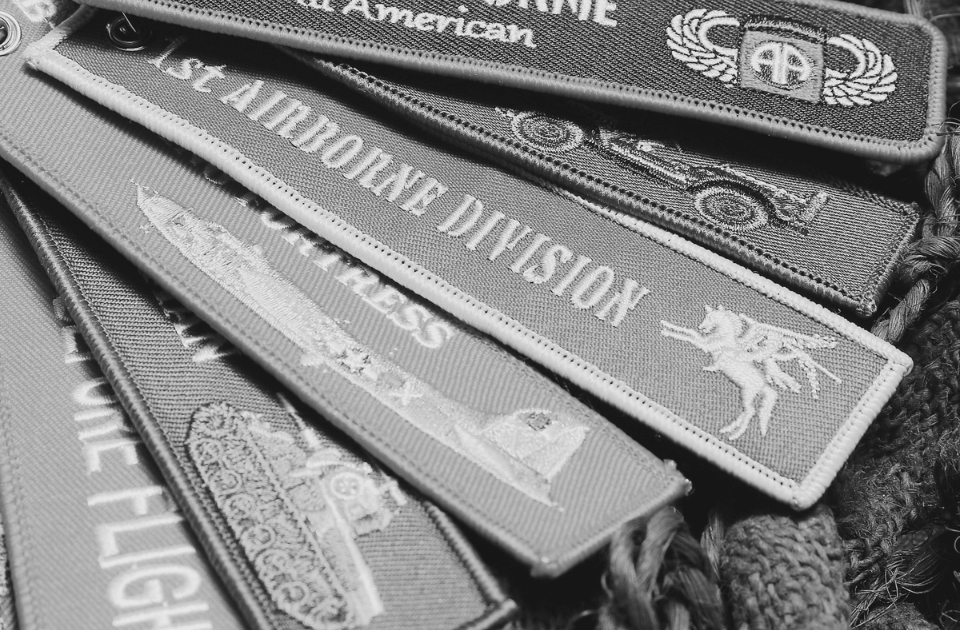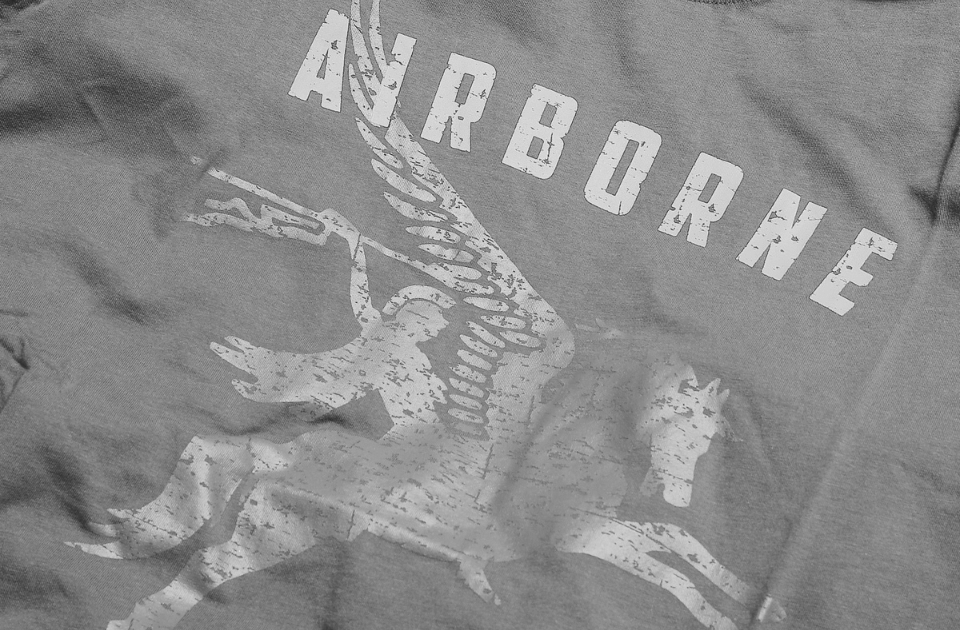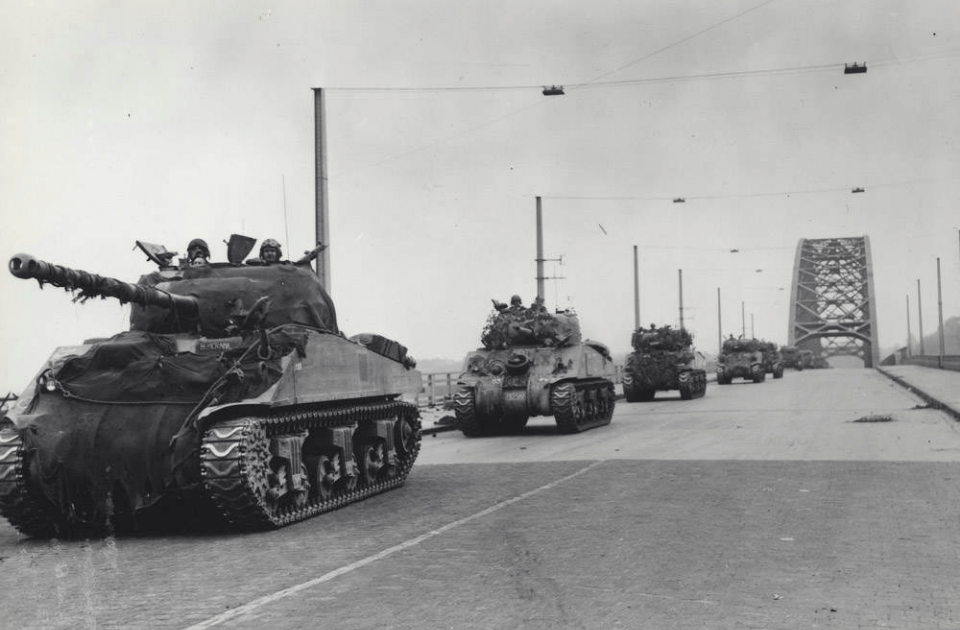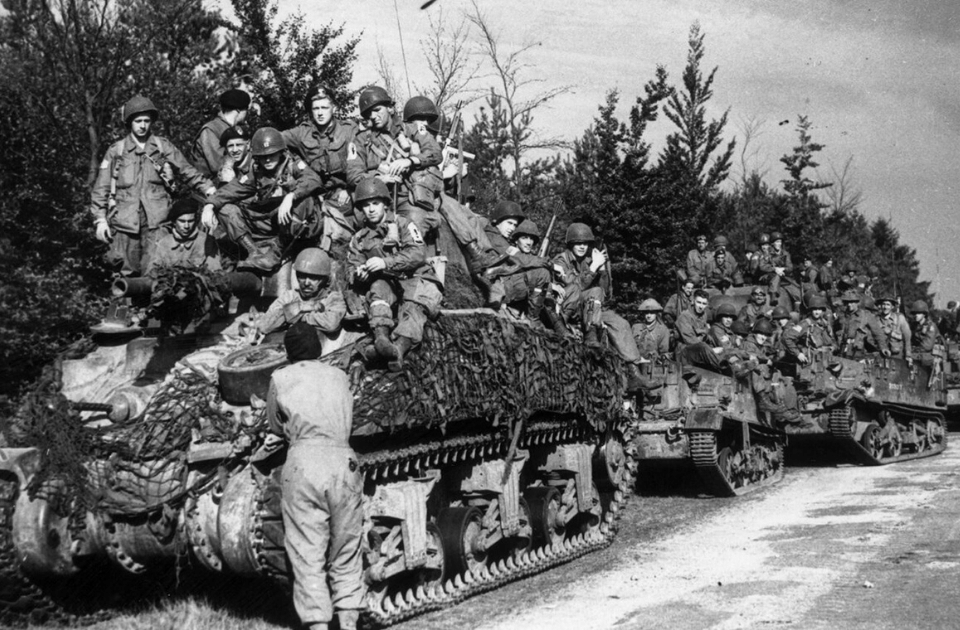D-DAY : CONTRE ATTENDU (NORMANDIE – 06-06-1944).
22 januari 2022101E DIVISION AÉROPORTÉE : RENDEZ-VOUS AVEC LE DESTIN.
22 januari 2022
101st AIRBORNE DIVISION:
"RENDEZVOUS WITH DESTINY"
It’s one minute past midnight on the 16th of August 1942, and the 101st Airborne Division (Air Assault) is born. Nicknamed the “Screaming Eagles”, those first trailblazers of the 101st set the bar high. Like the intrepid pioneers who courageously left their homes behind to form a new one in America, their descendants were pioneers for the future.
They had high professionalism and standards, a strong esprit de corps, and a commitment to serving their country to their last breath if needed. They were ready to carry out operations of immense importance. Still today, these heroes are renowned for their unmatched air assault capability.
On the 7th of December 1941, nine months before the 101st Airborne Division was formed, America declared war after the Japanese attacked Pearl Harbour. A call to arms spread like wildfire across the nation: Join the fight for freedom! Thousands of volunteers stepped up to the plate. For those who joined the 101st, their plate would be a parachute; their step would bring forth a range of heroes the world would never forget: knights on their flying metal chargers.
The enormous mobilisation effort in America at the beginning of the Second World War included the development of air warfare. Fighting via the air was a new and largely unexplored phenomenon up to that point. Air balloons had been used, but conflict with the involvement of large-scale aircraft took its initial teetering steps in the First World War. Europeans were using aircraft in reconnaissance efforts, which was proving to be a success. But the Americans had fallen behind Europe in technical aviation development and only began to improve on this situation towards the end of the war in 1918.
The 101st Airborne Division was one of the divisions formed at this time, but it was demobilised the following month, then reformed as a reserve unit between the World Wars. However, with America entering the Second World War, it was understood that paratroopers could be an important part of the war effort, and focus was put on developing this form of assault.
By the 15th of August 1942, the 101st reserve unit was disbanded, and the famous 101st Airborne Division emerged. Although the parachute school had only been operational for four months, a test platoon of paratroopers made their first jump in the summer of 1940. Paratroopers were needed urgently. The best volunteers were sought. Their mission? To land behind enemy lines.
These volunteers all exhibited the characteristics for which they became renowned: physical and mental toughness and an ability to stay calm in a crisis. They knew that their mission was dangerous, but like true heroes, they were ready for a rendezvous with destiny—the motto of this amazing band of brothers.
This motto comes from a speech Commander Maj. Gen. William C. Lee gave in his first address to those early recruits of the newly created 101st Airborne Division. He noted that although the division had no history, it had “a rendezvous with destiny”, and the division was to be called on when the need was “immediate and extreme”. Immediate was known. How extreme would soon become evident.
In 1943, the men flew to the UK for further training. The D-Day landings on the beaches of Normandy on the 6th of June 1944 was the moment they saw their first combat and became among the first Americans to set foot in occupied France.
Imagine the sky full of hundreds of parachutes. Men landing into the unknown. Guns at the ready. Who knew where the enemy might be lurking. Adrenaline must have been high, nerves on edge, yet these men managed to keep their heads. Even though some units missed their landing zones, the heroes managed to capture key bridges and road junctions. They also successfully cleared the way for the infantry landing at the Omaha and Utah beaches. They made a significant contribution to impeding the German army’s ability to react to the amphibious assault.
That battle might have been over, but the war was not. Imagine those men, exhausted, sitting together, sharing a quiet morning moment before the next onslaught. One poured stiff coffee into their enamel mugs, and another peeled an apple with his combat knife. How would they have felt if they had known they would spend a total of 72 days in combat?
D-Day had begun, but there were to be many gruelling hours of combat before the task was finished. In September, after a short rest, they were up in the air again and dropped into the Netherlands. Operation Market Garden had begun. Fighting incredible odds, they held a narrow corridor 26 km long, through enemy territory, from Eindhoven to Grave. For ten harrowing days, they stood their ground, refusing to submit to the enemy.
As they continued their vital role in the liberation of the Netherlands, imagine the boost they felt when civilians flocked to the streets to welcome these heroes who were liberating them from the yoke of occupation. Maybe these warriors wished to get a good night’s rest, but their wish to see the end of this war—a war that was suppressing freedom—was stronger. They would have thrown their canvas bags over their shoulders and got on with the job.
Before much celebrating or sleep could be had, they were called to action again in the Battle of the Bulge. The Germans had set up a major offensive in the densely forested Ardennes region between Belgium and Luxembourg. Again, the 101st Airborne Division played a vital role in one of the war’s most important battles.
While defending the critical transportation hub of Bastogne, Belgium, the 101st was surrounded by advancing enemy forces who demanded immediate surrender. The acting division commander, Brigadier General Anthony C. McAuliffe, made history with his iconic response, “Nuts!” The men fought on, breaking the siege and fighting constantly until January of 1945.
The Battle of the Bulge marked the last major offensive attempted by the Axis Powers on the Western front. After their defeat, Germany would retreat for the remainder of the war, and the 101st Airborne Division was nearing its last action in this war.
As they moved into the south of Germany, they liberated Kaufering IV, one of the concentration camps in the Landsberg region. They then captured Berchtesgaden, Hitler’s mountain retreat, hunting out members of the Nazi leadership who had gone into hiding.
In November of 1945, it was finally time to go home. They had played their part in liberating the world from tyranny.
The men of the 101st Airborne Division were among the best warriors in the war. They fought valiantly and refused to be defeated. They had some of the best leaders of the time. Leaders with integrity, vision and decisiveness, able to give orders and yet be human and collaborate with their brothers in arms. But it was also those in the ranks who were heroes. Men who were willing to go beyond the call of duty, not just for themselves, but for others and for the freedom in which they believed. Their honour helped make this world a better place.
Fostex WW2 series in your shop?
101ST AIRBORNE DIVISION: RENDEZVOUS WITH DESTINY.
22 januari 2022OPERATION MARKET GARDEN: ATTEMPTING TO LIBERATE THE NETHERLANDS.
22 januari 2022
101e DIVISION AÉROPORTÉE :
"RENDEZ-VOUS AVEC LE DESTIN"
Il est minuit une minute le 16 août 1942, et la 101st Airborne Division (Air Assault) est née. Surnommés les « Screaming Eagles », ces premiers pionniers de la 101e placent la barre haute. Comme les pionniers intrépides qui ont courageusement quitté leur maison pour en fonder une nouvelle en Amérique, leurs descendants étaient des pionniers pour l'avenir.
Ils avaient un professionnalisme et des normes élevés, un fort esprit de corps et un engagement à servir leur pays jusqu'à leur dernier souffle si nécessaire. Ils étaient prêts à mener à bien des opérations d'une immense importance. Encore aujourd'hui, ces héros sont réputés pour leur capacité d'assaut aérien inégalée.
Le 7 décembre 1941, neuf mois avant la formation de la 101st Airborne Division, l'Amérique déclare la guerre après l'attaque de Pearl Harbour par les Japonais. Un appel aux armes s'est répandu comme une traînée de poudre dans tout le pays : rejoignez le combat pour la liberté ! Des milliers de bénévoles se sont mobilisés. Pour ceux qui rejoindraient la 101e, leur plaque serait un parachute ; leur pas ferait naître une gamme de héros que le monde n'oublierait jamais: des chevaliers sur leurs chargeurs volants en métal.
L'énorme effort de mobilisation en Amérique au début de la Seconde Guerre mondiale comprenait le développement de la guerre aérienne. Les combats aériens étaient un phénomène nouveau et largement inexploré jusqu'alors. Des ballons à air avaient été utilisés, mais le conflit avec l'implication d'avions à grande échelle a fait ses premiers pas vacillants pendant la Première Guerre mondiale. Les Européens utilisaient des avions dans des efforts de reconnaissance, ce qui s'est avéré être un succès. Mais les Américains avaient pris du retard sur l'Europe dans le développement technique de l'aviation et n'ont commencé à améliorer cette situation que vers la fin de la guerre en 1918.
La 101st Airborne Division était l'une des divisions formées à cette époque, mais elle fut démobilisée le mois suivant, puis reformée en unité de réserve entre les deux guerres mondiales. Cependant, avec l'entrée de l'Amérique dans la Seconde Guerre mondiale, on a compris que les parachutistes pouvaient jouer un rôle important dans l'effort de guerre, et l'accent a été mis sur le développement de cette forme d'assaut.
Le 15 août 1942, la 101e unité de réserve est dissoute et la célèbre 101e division aéroportée voit le jour. Bien que l'école de parachutistes n'ait été opérationnelle que pendant quatre mois, un peloton d'essai de parachutistes a fait son premier saut à l'été 1940. Les parachutistes étaient nécessaires de toute urgence. Les meilleurs volontaires ont été recherchés. Leur mission ? Atterrir derrière les lignes ennemies.
Ces volontaires présentaient tous les caractéristiques pour lesquelles ils sont devenus célèbres : endurance physique et mentale et capacité à rester calme en cas de crise. Ils savaient que leur mission était dangereuse, mais comme de vrais héros, ils étaient prêts pour un rendez-vous avec le destin - la devise de cette incroyable bande de frères.
Cette devise vient d'un discours prononcé par le Commandant-Major-général William C. Lee lors de sa première allocution aux premières recrues de la 101e division aéroportée nouvellement créée. Il a noté que bien que la division n'ait pas d'histoire, elle avait "un rendez-vous avec le destin", et la division devait être appelée lorsque le besoin était "immédiat et extrême". Immédiat était connu. Comment extrême deviendrait bientôt évident.
En 1943, les hommes se sont envolés pour le Royaume-Uni pour une formation complémentaire. Le débarquement du jour J sur les plages de Normandie le 6 juin 1944 fut le moment où ils virent leur premier combat et devinrent parmi les premiers américains à fouler le sol en France occupée.
Imaginez le ciel rempli de centaines de parachutes. Des hommes atterrissant dans l'inconnu. Armes à feu prêtes. Qui savait où l'ennemi pouvait se cacher. L'adrénaline a dû être forte, les nerfs à vif, mais ces hommes ont réussi à garder la tête froide. Même si certaines unités ont raté leurs zones d'atterrissage, les héros ont réussi à capturer des ponts et des carrefours routiers clés. Ils ont également réussi à dégager la voie pour le débarquement de l'infanterie sur les plages d'Omaha et de l'Utah. Ils ont contribué de manière significative à entraver la capacité de l'armée allemande à réagir à l'assaut amphibie.
Cette bataille était peut-être terminée, mais la guerre ne l'était pas. Imaginez ces hommes, épuisés, assis ensemble, partageant un moment matinal tranquille avant le prochain assaut. L'un versait du café bien raide dans leurs tasses émaillées, et un autre épluchait une pomme avec son couteau de combat. Comment se seraient-ils sentis s'ils avaient su qu'ils passeraient 72 jours au total au combat ?
Le jour J avait commencé, mais il devait y avoir de nombreuses heures de combat exténuantes avant que la tâche ne soit terminée. En septembre, après un court repos, ils étaient de nouveau en l'air et sont tombés aux Pays-Bas. L'opération Market Garden avait commencé. Combattant des obstacles incroyables, ils tenaient un étroit couloir de 26 km de long, à travers le territoire ennemi, d'Eindhoven à Grave. Pendant dix jours atroces, ils ont tenu bon, refusant de se soumettre à l'ennemi.
Alors qu'ils poursuivaient leur rôle vital dans la libération des Pays-Bas, imaginez l'élan qu'ils ont ressenti lorsque les civils ont afflué dans les rues pour accueillir ces héros qui les libéraient du joug de l'occupation. Peut-être que ces guerriers souhaitaient passer une bonne nuit de repos, mais leur souhait de voir la fin de cette guerre - une guerre qui supprimait la liberté - était plus fort. Ils auraient jeté leurs sacs en toile sur leurs épaules et se seraient mis au travail.
Avant qu'ils ne puissent faire la fête ou dormir, ils furent à nouveau appelés à l'action dans la Bataille des Ardennes. Les Allemands avaient lancé une offensive majeure dans la région densément boisée des Ardennes entre la Belgique et le Luxembourg. Encore une fois, la 101e division aéroportée a joué un rôle vital dans l'une des batailles les plus importantes de la guerre.
Alors qu'elle défendait la plaque tournante des transports de Bastogne, en Belgique, la 101e a été encerclée par l'avancée des forces ennemies qui ont exigé une reddition immédiate. Le commandant de division par intérim, le brigadier général Anthony C. McAuliffe, est entré dans l'histoire avec sa réponse emblématique, "Nuts!" Les hommes ont combattu, brisant le siège et se battant constamment jusqu'en janvier 1945.
La bataille des Ardennes a marqué la dernière grande offensive tentée par les puissances de l'Axe sur le front occidental. Après leur défaite, l'Allemagne se retirerait pour le reste de la guerre, et la 101e division aéroportée approchait de sa dernière action dans cette guerre.
En pénétrant dans le sud de l'Allemagne, ils ont libéré Kaufering IV, l'un des camps de concentration de la région de Landsberg. Ils ont ensuite capturé Berchtesgaden, la retraite de montagne d'Hitler, chassant les membres de la direction nazie qui s'étaient cachés.
En novembre 1945, il était enfin temps de rentrer à la maison. Ils avaient joué leur rôle en libérant le monde de la tyrannie.
Les hommes de la 101st Airborne Division étaient parmi les meilleurs guerriers de la guerre. Ils se sont battus vaillamment et ont refusé d'être vaincus. Ils avaient certains des meilleurs dirigeants de l'époque. Des leaders intègres, visionnaires et décisifs, capables de donner des ordres tout en étant humains et en collaborant avec leurs frères d'armes. Mais c'étaient aussi ceux qui étaient dans les rangs qui étaient des héros. Des hommes qui étaient prêts à aller au-delà de l'appel du devoir, non seulement pour eux-mêmes, mais pour les autres et pour la liberté en laquelle ils croyaient. Leur honneur a contribué à rendre ce monde meilleur.
La série Fostex WW2 dans votre boutique ?
Trouver un revendeur près de chez vous!

